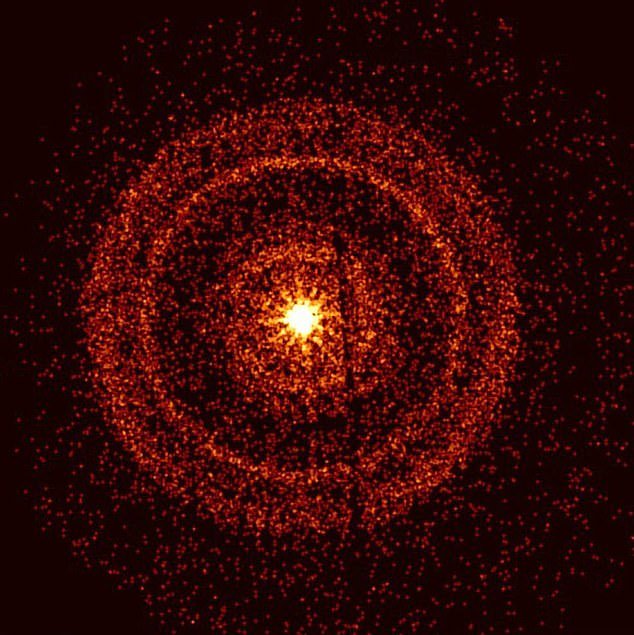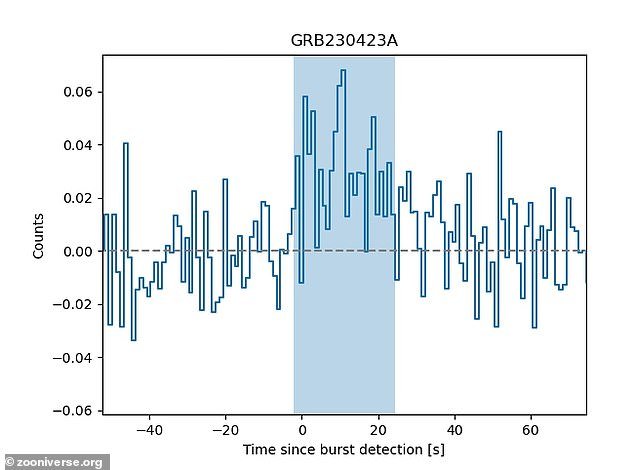NASA needs YOUR help to solve these cosmic mysteries. This is how you can participate
NASA is allowing citizens to become amateur astronomers as they search for answers about mysterious explosions in space.
Citizen ‘Burst Chasers’ are asked to read signals from the events, known as gamma-ray bursts (GRBs), and decode what the universe might be saying.
Gamma rays are a bright form of light that comes from billions of light years away from Earth. The US space agency believes that the origin of this cosmic wonder lies in the released pulses.
Volunteer scientists will examine all the slow bursts of energy that the Neil Gehrels Swift Observatory telescope detects and submit their findings via the project’s website.
Gamma rays are a bright form of light that comes from billions of light years away

the Neil Gehrels Swift Observatory telescope detects bursts of light, or gamma rays
GRBs were first discovered in the 1960s and have since baffled scientists around the world, but also sparked a hunt to find out what causes these violent explosions.
When stars or black holes die, they eject material at speeds close to the speed of light, and with powerful bright, short-lived gamma-ray bursts that can be detected by orbiting satellites.
The magnetic fields are not directly visible, but telescopes like Hubble pick up a signature encoded in the light produced by charged particles, or electrons, zooming around the magnetic field lines.
And Earth-based telescopes have also captured this light, which has traveled through the universe for millions of years.
NASA described the pulses as “short bursts of gamma rays and are one of the most energetic explosions in the universe!”
The agency added that while they know what gamma rays are connected to, “how exactly these events produce pulses with such a variety of characteristics remains a mystery.”
In a desperate plea, NASA concluded, “We need your help to sequence these pulses to better understand how these powerful gamma-ray pulses are created.”
The Site of the Burst Chaser project gives amateur astronomers clues to the types of reactions they are looking for.

Volunteers can join the Burst Chaser project to identify pulses emitted by gamma rays
The website also offers a tutorial and a task designed to test the person’s knowledge of recording and classifying the pulse shapes of gamma-ray bursts.
When a gamma ray explodes, it emits both a noise fluctuation and a pulse, which NASA classifies as twice the size of the noise.
The outbursts could give astronomers insight into what happens in extreme environments they can’t recreate on Earth, and it could provide clues about how the universe formed and evolved.
However, NASA explains that “there are no clear definitions between pulses and noise,” and requests that volunteers “please use common sense to distinguish them.”
The Burst Chaser project has received more than 1,200 volunteers and nearly 72,000 gamma-ray classifications.
“We need your help to classify these pulses so we can get more clues about what they really are!” said Professor Amy Lien of the University of Tampa, lead researcher on the project.
